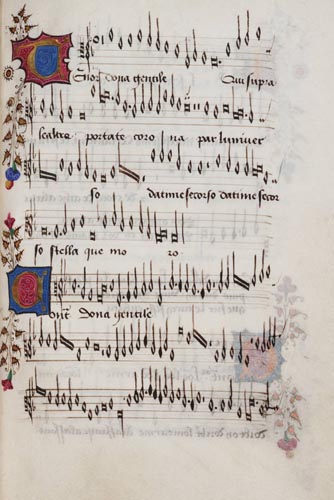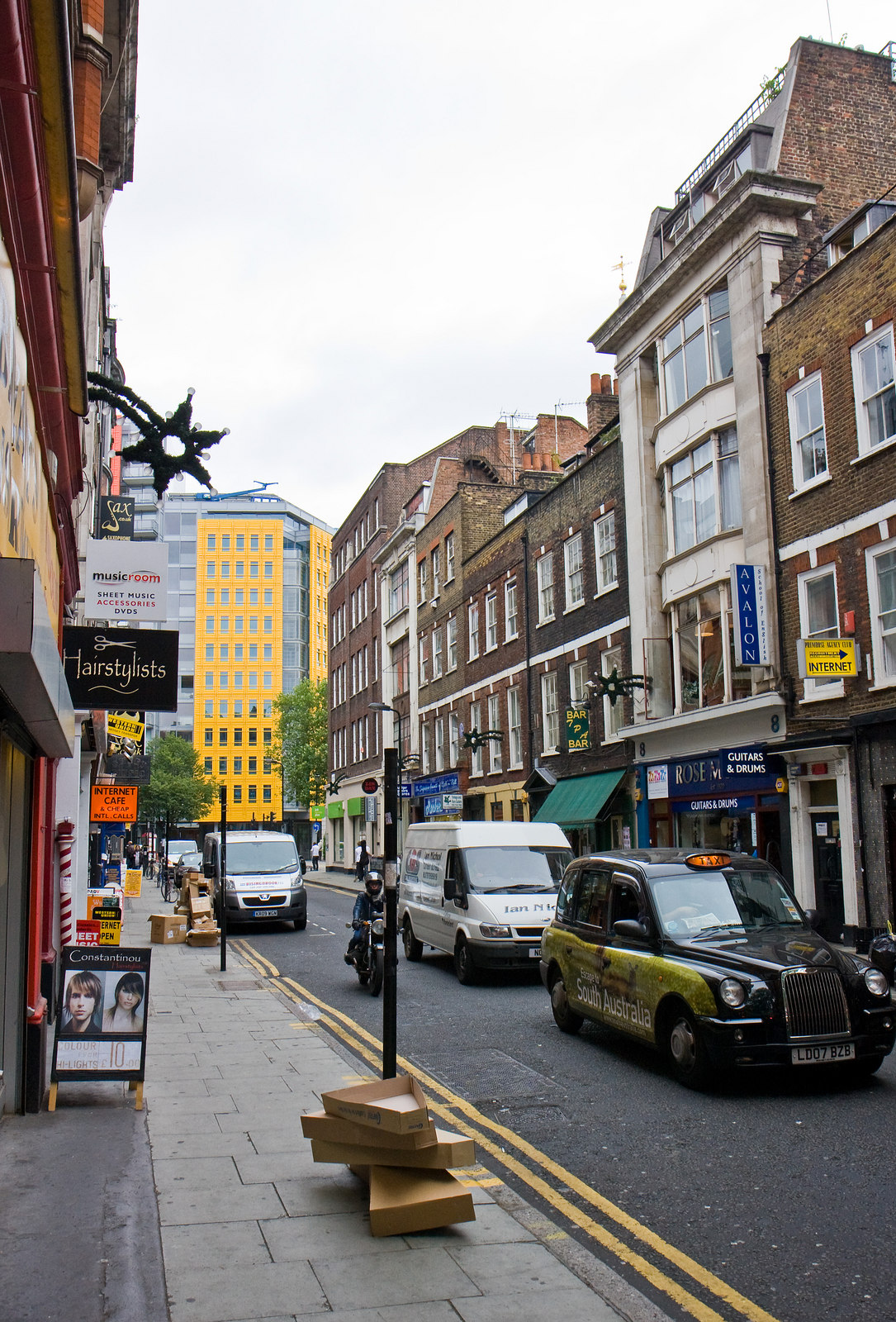|
Tin Pan Alley
Tin Pan Alley was a collection of History of music publishing, music publishers and songwriters in New York City that dominated the American popular music, popular music of the United States in the late 19th and early 20th centuries. It originally referred to a specific place: West 28th Street between Fifth Avenue, Fifth and Sixth Avenues in the List of Manhattan neighborhoods#Between Midtown and Downtown, Flower District of Manhattan; a plaque (see #plaque, below) on the sidewalk on 28th Street between Broadway (Manhattan), Broadway and Sixth commemorates it. In 2019, the New York City Landmarks Preservation Commission took up the question of preserving five buildings on the north side of the street as a Tin Pan Alley Historic District. The agency designated five buildings (47–55 West 28th Street) individual landmarks on December 10, 2019, after a concerted effort by the "Save Tin Pan Alley" initiative of the 29th Street Neighborhood Association. Following successful prote ... [...More Info...] [...Related Items...] OR: [Wikipedia] [Google] [Baidu] |
History Of Music Publishing
Music publishing is the business of creating, producing and distributing printed musical scores, parts, and books in various types of music notation, while ensuring that the composer, songwriter and other creators receive credit and royalties or other payment (where applicable). This article outlines the early history of the industry. Printing Music publishing did not begin on a large scale until the mid-15th century, when mechanical techniques for printing music were first developed. The earliest example, a set of liturgical chants, dates from about 1465, shortly after the Gutenberg Bible. Prior to this time, music had to be copied out by hand. This was a very labor-intensive and time-consuming process, so it was first undertaken only by monks and priests seeking to preserve sacred music for the church. The few collections of secular music that are extant were commissioned and owned by wealthy noblemen. Examples include the Squarcialupi Codex of Italian Trecento music and the ... [...More Info...] [...Related Items...] OR: [Wikipedia] [Google] [Baidu] |
Sheet Music
Sheet music is a handwritten or printed form of musical notation that uses musical symbols to indicate the pitches, rhythms, or chords of a song or instrumental musical piece. Like its analogs – printed books or pamphlets in English, Arabic, or other languages – the medium of sheet music typically is paper (or, in earlier centuries, papyrus or parchment). However, access to musical notation since the 1980s has included the presentation of musical notation on computer screens and the development of scorewriter computer programs that can notate a song or piece electronically, and, in some cases, "play back" the notated music using a synthesizer or virtual instruments. The use of the term "sheet" is intended to differentiate written or printed forms of music from sound recordings (on vinyl record, cassette, CD), radio or TV broadcasts or recorded live performances, which may capture film or video footage of the performance as well as the audio component. In every ... [...More Info...] [...Related Items...] OR: [Wikipedia] [Google] [Baidu] |
Copyright
A copyright is a type of intellectual property that gives its owner the exclusive right to copy, distribute, adapt, display, and perform a creative work, usually for a limited time. The creative work may be in a literary, artistic, educational, or musical form. Copyright is intended to protect the original expression of an idea in the form of a creative work, but not the idea itself. A copyright is subject to limitations based on public interest considerations, such as the fair use doctrine in the United States. Some jurisdictions require "fixing" copyrighted works in a tangible form. It is often shared among multiple authors, each of whom holds a set of rights to use or license the work, and who are commonly referred to as rights holders. These rights frequently include reproduction, control over derivative works, distribution, public performance, and moral rights such as attribution. Copyrights can be granted by public law and are in that case considered "territorial ... [...More Info...] [...Related Items...] OR: [Wikipedia] [Google] [Baidu] |
West End Of London
The West End of London (commonly referred to as the West End) is a district of Central London, west of the City of London and north of the River Thames, in which many of the city's major tourist attractions, shops, businesses, government buildings and entertainment venues, including West End theatres, are concentrated. The term was first used in the early 19th century to describe fashionable areas to the west of Charing Cross.Mills, A., ''Oxford Dictionary of London Place Names'', (2001) The West End covers parts of the boroughs of Westminster and Camden.Greater London Authority, The London Plan: The Sub Regions'' While the City of London is the main business and financial district in London, the West End is the main commercial and entertainment centre of the city. It is the largest central business district in the United Kingdom, comparable to Midtown Manhattan in New York City, the 8th arrondissement in Paris, Causeway Bay in Hong Kong, or Shibuya in Tokyo. It is one of t ... [...More Info...] [...Related Items...] OR: [Wikipedia] [Google] [Baidu] |
Denmark Street
Denmark Street is a street on the edge of London's West End running from Charing Cross Road to St Giles High Street. It is near St Giles in the Fields Church and Tottenham Court Road station. The street was developed in the late 17th century and named after Prince George of Denmark. Since the 1950s it has been associated with British popular music, first via publishers and later by recording studios and music shops. A blue plaque was unveiled in 2014 commemorating the street's importance to the music industry. The street was originally residential, but became used for commercial purposes in the 19th century. At first, metalwork was a popular trade but it became most famous as Britain's "Tin Pan Alley" housing numerous music publishers' offices. This market declined in the 1960s to be replaced by music shops and independent recording studios. The Rolling Stones recorded at Regent Sound Studio at No. 4 and popular musicians, including David Bowie and the Small Faces, often so ... [...More Info...] [...Related Items...] OR: [Wikipedia] [Google] [Baidu] |
Hamptons (magazine)
''Hamptons'' is a magazine founded by Randy Schindler in 1978 and published thirteen times throughout the year focused on real estate, interior design, fashion, art, culture, dining, entertainment, fitness, and philanthropy. The magazine was subsequently published by Niche Media, which was founded in 1998 by Jason Binn, and has an approximate circulation of 40,000 – 50,000 copies, distributed all over The Hamptons. Niche Media was renamed GreenGale Publishing in 2015. GreenGale was acquired by Modern Luxury in 2017. In February 2018, Anetta Nowosielska was named as the editor-in-chief An editor-in-chief (EIC), also known as lead editor or chief editor, is a publication's editorial leader who has final responsibility for its operations and policies. The highest-ranking editor of a publication may also be titled editor, managing ... of the magazine. References External links ''Hamptons'' magazine official website 1978 establishments in New York (state) Design magazines ... [...More Info...] [...Related Items...] OR: [Wikipedia] [Google] [Baidu] |
Harry Von Tilzer
Harry Von Tilzer (born Aaron Gumbinsky, also known as Harry Gumm; 8 July 1872 – 10 January 1946) was an American composer, songwriter, publisher and vaudeville performer. Early life Von Tilzer was born in Detroit, Michigan. His parents, Sarah (Tilzer) and Jacob Gumbinsky, were Polish Jewish immigrants. Harry ran away and joined a traveling circus at age 14, where he adopted his mother's maiden name as his own, seeking to make it sound even classier by tacking on a "Von." So impressive seemed the transformation that eventually all his brothers changed their last name to match his. Career Harry proved successful playing piano and calliope and writing new tunes and incidental music for shows. He continued doing this for burlesque and vaudeville shows for some years, writing many tunes which were not published or which he sold to entertainers for one or two dollars. In 1898, he sold his song "My Old New Hampshire Home" to a publisher for $15, and watched it become a national hit, ... [...More Info...] [...Related Items...] OR: [Wikipedia] [Google] [Baidu] |
Simon Napier-Bell
Simon Robert Napier-Bell (born 22 April 1939) is an English record producer, music manager, author and journalist. At different times, he has managed artists as diverse as the Yardbirds, John's Children, Marc Bolan, Japan, London, Ultravox, Boney M, Sinitta, Wham!, Blue Mercedes, Alsou and Candi Staton, among others. Early years Napier-Bell attended Durston House in Ealing and then later a primary school at Perivale. He then attended Harrow County School for Boys and Bryanston School in Dorset. Whilst at Bryanston he formed the school's first jazz band. When he left school at age 17, it was with the idea of becoming a professional musician, preferably in America. A year later, unable to get a visa to the United States, he emigrated to Canada. Napier-Bell is an atheist and an openly gay man. Music business Songwriter When he returned to England he worked as an assistant film editor. With a thorough knowledge of music, he soon progressed to being a music editor and landed the ... [...More Info...] [...Related Items...] OR: [Wikipedia] [Google] [Baidu] |
New York Herald
The ''New York Herald'' was a large-distribution newspaper based in New York City that existed between 1835 and 1924. At that point it was acquired by its smaller rival the '' New-York Tribune'' to form the '' New York Herald Tribune''. History The first issue of the paper was published by James Gordon Bennett Sr., on May 6, 1835. The ''Herald'' distinguished itself from the partisan papers of the day by the policy that it published in its first issue: "We shall support no party—be the agent of no faction or coterie, and we care nothing for any election, or any candidate from president down to constable." Bennett pioneered the "extra" edition during the ''Heralds sensational coverage of the Robinson–Jewett murder case. By 1845, it was the most popular and profitable daily newspaper in the United States. In 1861, it circulated 84,000 copies and called itself "the most largely circulated journal in the world." Bennett stated that the function of a newspaper "is not to ... [...More Info...] [...Related Items...] OR: [Wikipedia] [Google] [Baidu] |
Monroe H
Monroe or Monroes may refer to: People and fictional characters * Monroe (surname) * Monroe (given name) * James Monroe, 5th President of the United States Places United States * Monroe, Arkansas, an unincorporated community and census-designated place * Monroe, California, former name of Hales Grove, California * Fort Monroe (Yosemite), California, a historic site * Monroe, Connecticut, a town * Monroe County, Florida * Lake Monroe (Florida) * Monroe, Georgia, a city * Monroe, Adams County, Indiana, a town * Monroe, Tippecanoe County, Indiana, an unincorporated community * Lake Monroe (Indiana), a reservoir * Monroe, Iowa, a city * Monroe, Kentucky, an unincorporated community * Monroe, Louisiana, a city * Monroe, Maine, a town * Monroe, Massachusetts, a town * Monroe, Michigan, a city * Lake Monroe (Mississippi), Monroe County, Mississippi * Monroe Island, in the Yellowstone River in Montana * Monroe, Nebraska, a village * Monroe, New Hampshire a town * Mount Monroe, a p ... [...More Info...] [...Related Items...] OR: [Wikipedia] [Google] [Baidu] |






